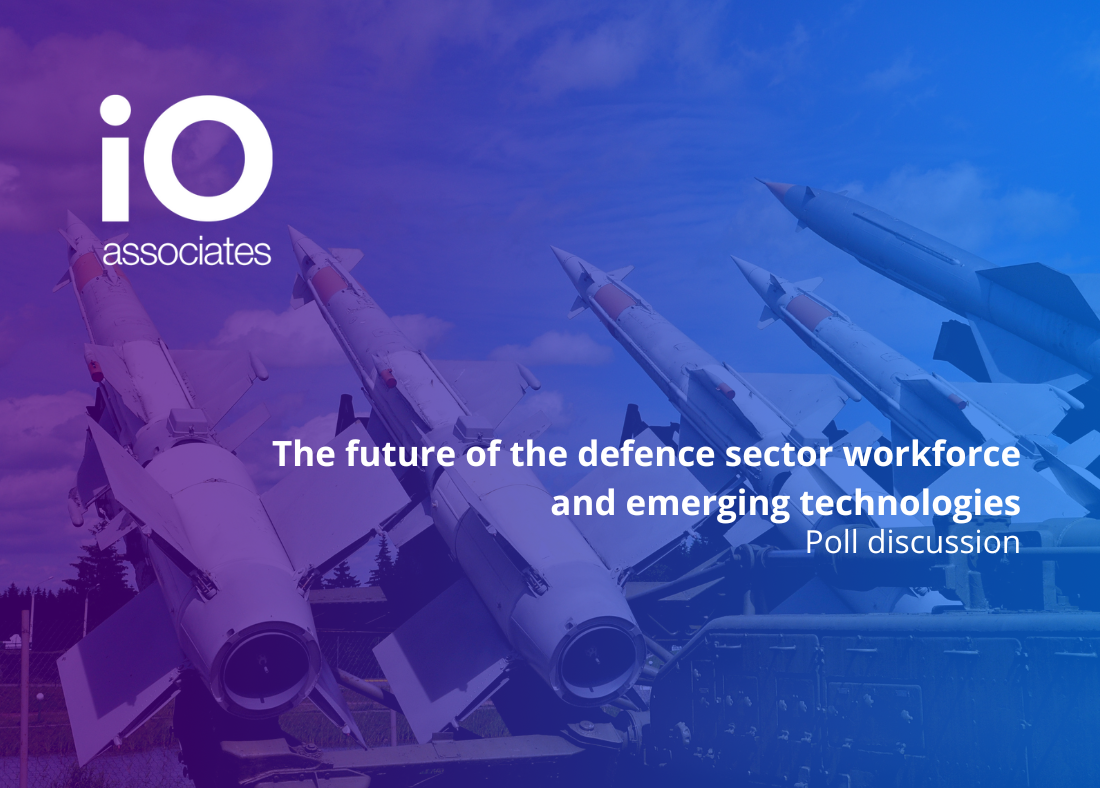The future of the defence sector workforce and emerging technologies - Poll discussion
Posted on March 2024 By iO Associates
.png)
In a recent LinkedIn poll, we asked our community to weigh in on what emerging trends or technologies they believe will have the most significant impact on the future of the defence sector workforce. The results are in, and they shed light on where professionals in the field see the industry heading.
The defence industry is poised for a shift in 2024, marked by advancements that will redefine how we perceive and operate within this sector. With our upcoming exhibition appearance at the Security Cleared Expo event (find out more here), we became even more curious to explore the specific trends and technologies that will wield the greatest influence on the defence sector workforce this year.
Topping the list with an overwhelming 57% of the votes is AI and Machine Learning. It comes as no surprise that these cutting-edge technologies are at the forefront of discussions surrounding the future of defence. AI and machine learning have the potential to revolutionise every aspect of defence operations, from strategic decision-making to battlefield tactics. By harnessing the power of data analytics and automation, AI can enhance situational awareness, optimise resource allocation, and even predict potential threats before they occur. Moreover, machine learning algorithms can continuously adapt and evolve, staying one step ahead of opponents on the battlefield. As AI continues to mature, it will undoubtedly play an increasingly central role in shaping the defence workforce of the future.
Following closely behind is cybersecurity, with 38% of respondents recognising its paramount importance in the evolving defence ecosystem. In an era where cyber warfare poses a significant threat to national security, safeguarding critical infrastructure and sensitive data has become a top priority for defence organisations worldwide. As the battlefield extends into cyberspace, the demand for cybersecurity professionals with expertise in threat detection, incident response, and network defence will continue to soar. Investing in cybersecurity capabilities and fostering a cybersecurity-conscious culture will be essential for staying ahead of malicious attacks and safeguarding sensitive information.
While AI, machine learning, and cybersecurity dominate the conversation, it's essential not to overlook the role of traditional manufacturing in shaping the future of the defence sector workforce. Despite receiving only 5% of the votes, traditional manufacturing remains a cornerstone of defence production, providing the foundation upon which cutting-edge technologies are built. From aerospace components to armoured vehicles, the defence industry relies on advanced manufacturing techniques to produce the equipment and systems that ensure national security. As defence organisations embrace digitalisation traditional manufacturing processes are evolving to become more agile, efficient, and cost-effective.
The future of the defence sector workforce is poised for profound transformation driven by emerging trends and technologies. From AI and machine learning to cybersecurity and traditional manufacturing, each plays a crucial role in shaping the landscape of defence operations. By embracing innovation and investing in workforce development, defence organisations can adapt to the evolving threat landscape and maintain a competitive edge in an increasingly complex geopolitical environment. As we navigate the challenges and opportunities that lie ahead, one thing is clear, the defence workforce of our future will be defined by its ability to harness the power of technology to safeguard national security and uphold peace and stability worldwide.
Curious to find our more about iO Associates? Visit the Security Cleared Expo on the 25th of April at Aerospace Bristol and come and say hello!
Latest blogs
- Manchester Tech Journey Episode 8 Live Now!
- Posted By iO Associates on 22nd October 2025
- Germany’s Startup Ecosystem – Spotlight on North Rhine-Westphalia (NRW)
- Posted By Jason Duffield & Francis Macaulay on 29th September 2025
- Exhibiting at Tokenize:LDN
- Posted By iO Associates on 10th September 2025

